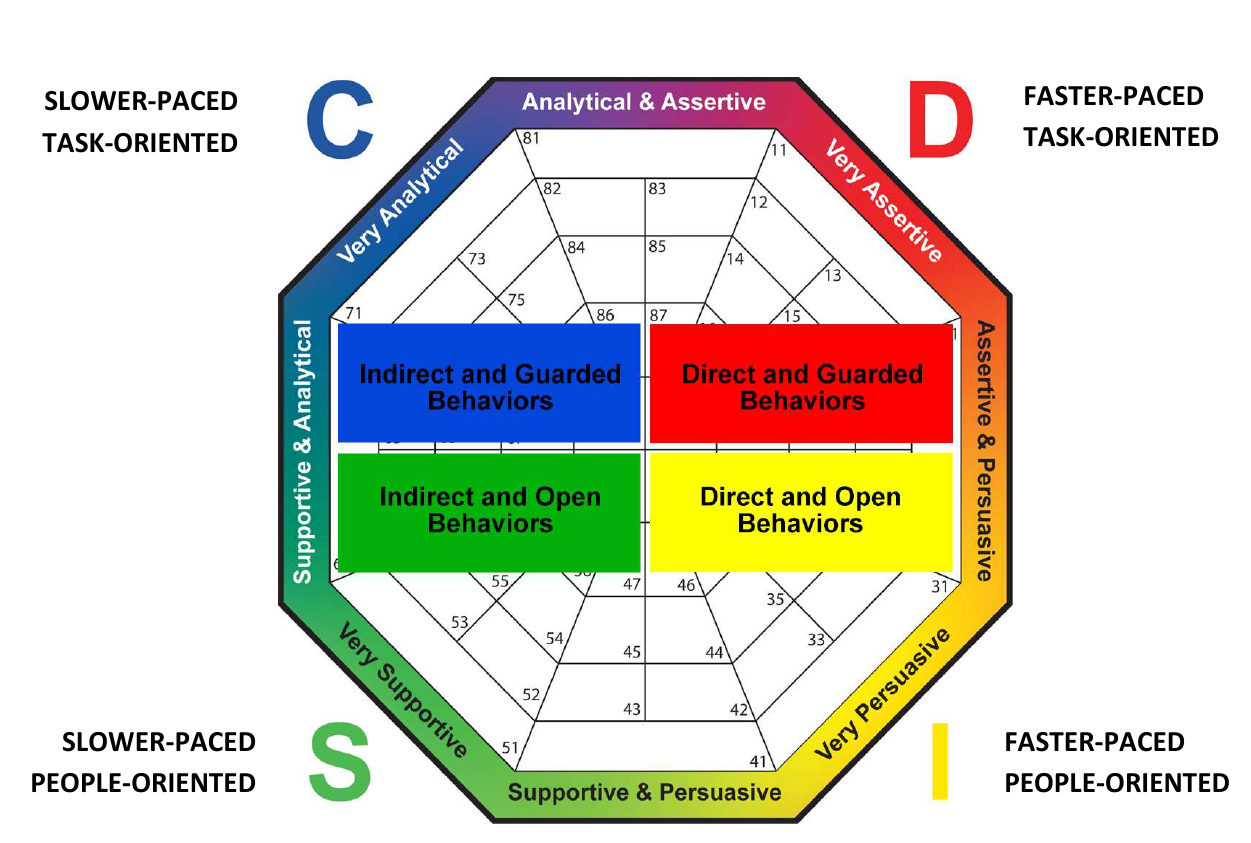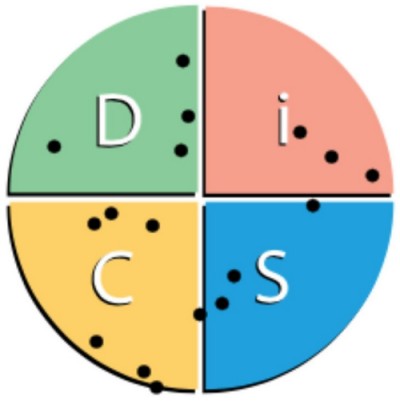
I’ve often said that people are the hardest part of software development. Developers think I’m joking when I say that. “Surely, the technology must be the hardest part,” they think. But anyone who’s been in software for a while and worked on a team will quickly tell you that the technology is the fun part; working well with other people is the challenging part.
We’ve all worked with people who are just super easy to work with. You just jive with them. And we’ve all worked with people who pushed our buttons and rubbed us the wrong way. We knew they had good intentions, but wow could they be frustrating to work with. Sometimes those people are even your boss!
Did you ever stop to wonder why some people were easy to work with and why others annoyed you so much (especially since they seemed to get along fine with others)? The reason is that we all have different behavioral styles when it comes to work. When we work with people who have similar styles, it’s easy-breasy, but when we work with people with diametrically opposite styles, it is very, very frustrating.
The good news is that there is a simple way to understand these different behavioral styles. Once you understand the source of your frustration with someone, you can work to address it. I’m not saying a problem will fully go away, but you can put things in perspective and reduce the pain of interacting with people who frustrate or annoy you.
The key to this understanding is the DISC model of behavior. DISC is a simple, practical, easy to remember and universally applicable model which describes patterns of external, observable behaviors, especially communication. It describes behaviors using dimensions of priority and pace and divides them into four specific styles.
Using the DISC model, it is easy to identify and understand our own style, recognize and cognitively adapt to other styles, and communicate more effectively with others.
Brief DISC Primer
Researchers have identified more than a dozen various models of our communication differences, but the DISC model proposes that they can be grouped into four basic styles: Dominance, Influence, Steadiness, and Conscientious. These are the D, I, S and C of DISC. There is no “best” style. Each style has its unique strengths and opportunities when it comes to work and life. They are different in their priority (task vs people) and their pace (fast vs moderate).
The Dominance (D) style describes people who are task focused and fast paced. D style people prioritize taking action, overcoming challenges and achieving results. They are demanding, strong-willed, determined and outspoken. They usually do not demonstrate patience, empathy or consensus building. If work was a children’s book, the D style would be characterized by the lion who likes to roar and be the boss of the jungle.
IThe Influence (I) style describes people who are motivated by social recognition and relationships. They prioritize getting groups to take action and are very collaborative and charismatic. They are not always the most objective or detail oriented and often will have a harder time following through on individual tasks. In our DISC children’s book, the I style would be the parrot that loves to talk, share stories, make friends and bring fun into any environment.
SThe Steadiness (S) style describes people who place an emphasis on cooperation and supporting others to accomplish the goal. They prioritize stability, loyalty, consistency and ensuring people feel respected and appreciated. Sometimes they can be seen as too accommodating and not willing to challenge the status quo. The S style in our children’s book would be the elephant that is calm, reliable, slow but able to carry a heavy load and always there to help their friends and keep peace in the jungle.
CThe Conscientious (C) style describes people who prioritize working meticulously and thoroughly through a problem to achieve high quality. They want time to fully understand an issue and develop their thoughts on the matter. They often produce very high quality output but can be seen as slow, overly analytical, or stuck in analysis-paralysis. In our children’s tale, the C style would be represented by the owl, wise and thoughtful and always trying to teach others and get everything just right.
Here are some examples of adjectives that are used to describe people who exhibit each of the 4 DISC styles:
| DOMINANCE | INFLUENCE | STEADINESS | CONSCIENTIOUS |
|---|---|---|---|
As you can see, each style contains both
Note: DISC is not about intelligence, aptitude, engagement, passion or capability. The DISC model helps simply explain how people prefer to behave and communicate, especially in a work environment.
Identifying your DISC style
Individuals can take a DISC Assessment which asks them a series of questions and then categorizes them using the 4 DISC style dimensions. The easiest way to visualize your behavioral style is using the classic DISC octagon (below). You can see how it’s possible to measure people both in terms of which quadrant they may fall in and how far to the edge they are, which indicates how extreme their behavior is in this quadrant. A placement towards the edges is referred to as being “high” in that area and closer to the origin is “low”.

Those who know me will not be surprised when I tell you that my behavior usually falls in the middle of the Supportive and Persuasive quadrant. At work, however, I skew more towards the Supportive and Analytical quadrant.
Note: DISC also recognizes that someone’s natural style may be different from how they behave at work. They differentiate between someone’s “natural” style and their “adapted” style.
It’s important to recognize that our behavior is not static. We may tend towards a specific style, but in a different situation or with different people, we may behave in a very different way. No one is always a single thing. The point of DISC is to help people identify their style tendendcies, understand how the other styles manifest in others, and see how to leverage other styles themselves.
DISC tension
It’s important to understand DISC because there is a natural tension between different behavioral styles, specifically when it comes to the priority and pace differences between them:
- D ⟷ C and I ⟷ S have different paces: D and I are faster-paced, and C and S are moderately-paced.
- D ⟷ I and S ⟷ C have different priorities: D and C are task-oriented, and I and S are people oriented.
- D ⟷ S and I ⟷ C have both pace and priority differences.
Assuming a normal distribution of the 4 DISC styles, that means on average, 75% of the people you interact with will have a different DISC style than you, leading to potential tension!
Understanding DISC lets you recognize that there is a good chance you will need to adapt your behavior to meet the other person closer to the middle. When working with someone with a different style, use these tips:
- If you are working with a High D person, you need to be fast paced, assertive and task focused, and not be offended that they aren’t warm and fuzzy to you.
- If you are working with a High I person, you need to be fast paced and highly interactive and social, and not be annoyed that they tend to prefer to do work in groups as opposed to by themselves.
- When working with a High S person, you need to recognize that they need time to think deeply about a topic and they will be concerned about the impact of sudden change on people (e.g., on morale). Remind them, however, not to lose sight of deadlines.
- When working with a High C person, you should leverage their highly analytical nature by making sure they have all the data and avoid rushing them, but also make sure they don’t get stuck in analysis paralysis.
For example, I am high on the S scale, but I work with a lot of High C and High D personalities. This creates a lot of potential tension. My boss, Suvajit, is high on the Dominance scale. Over time, we have learned to understand each other’s styles and adapt to them. When I work with him, I focus on being faster paced and decisive. He has learned to give me time to fully consider new ideas and he appreciates my perspective when it comes to the impact decisions have on our employees.
I have also learned to channel my “inner Suvajit” when dealing with other High D people or when faced with a situation that requires very fast action. Similarly, I know that when dealing with our architects, many of whom are high on the Conscientious scale, I need to deal in hard facts, be very precise in my communication, and not rush them to reach their conclusion.
I highly recommend that employees all take a DISC assessment so they can understand their own tendencies and understand the other styles they are likely to encounter at work.
Using DISC to support teams
I don’t necessarily recommend that everyone on a team be forced to share their DISC profiles. A DISC profile need not be a sensitive topic, but people new to DISC may chafe at being publicly labeled or put in a specific “box”.
Instead, a very effective DISC exercise for a team is the following:
- Draw the DISC octagon on a whiteboard or flipboard
- Have each person use a marker or dot to anonymously (no names) mark where their behavioral style falls on the octagon
- Once everyone is done, step back and review the grouping of dots (see example below)
- Most likely, there will be a few clusters of dots
- As a team, discuss how they feel about their balance of styles and what they think they should do to improve interpersonal interaction.
Discussion guide:
- If the dots cluster in a specific area, talk about what beneficial qualities from the other quadrants the team is missing and how they can mitigate this. For example, if everyone falls in the S or C area, they are missing the fast paced style of a D or I. How can they artificially encourage a faster pace on their team?
- If most people fall in a certain quadrant but a few people fall elsewhere, talk about how the team will handle this imbalance and ensure the minority behavioral group doesn’t feel frustrated or excluded. Think of ways to sustainably leverage the beneficial qualities of everyone on the team.
- If there is a good blend of styles on the team, first count your lucky stars, but then discuss how the team will handle the inevitable conflict that may arise from having lots of people with lots of different paces and priorities.

DISC as a panacea?
I’m not saying that DISC will solve all interpersonal conflicts at work. Sometimes jerks are actual jerks, not just people with different behavioral styles.
But in my experience, the vast majority of interpersonal conflict comes from people just having very opposite behavioral styles and not understanding that the other person has a different style from them. This misunderstanding can quickly spiral out of control, leading to job dissatisfaction and outright hostility. I’ve literally seen software engineers heatedly screaming at each other over what was really just their different approaches to accomplishing their team work (that was before we started teaching our employees about DISC).
There is a lot more to DISC than what I could cover here. I encourage you to read more about it and give it a shot: